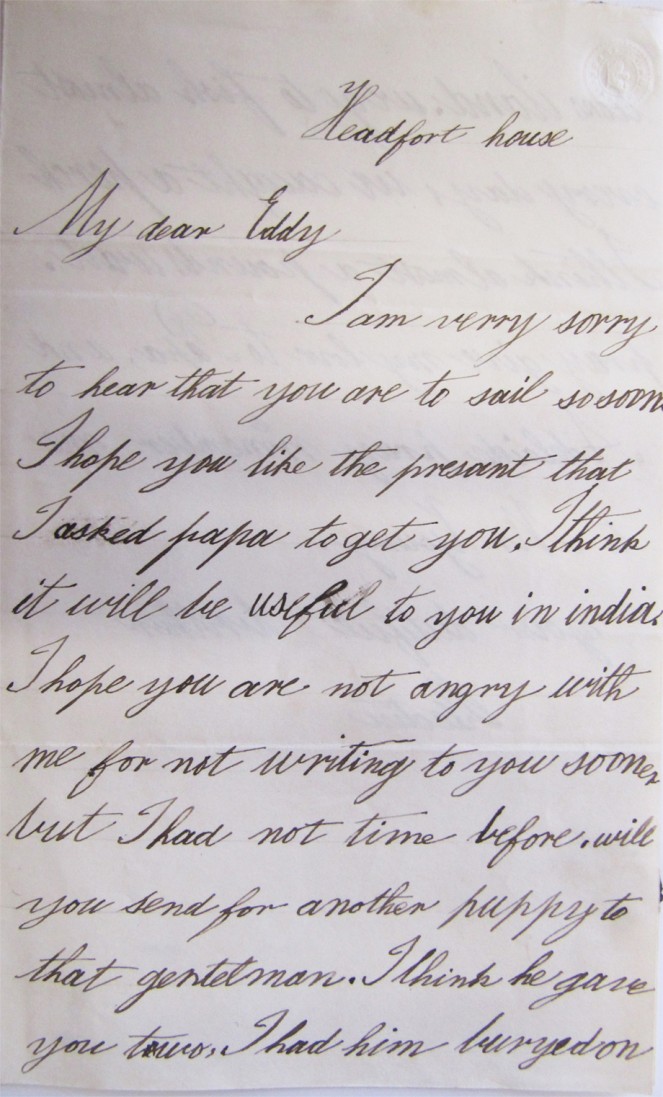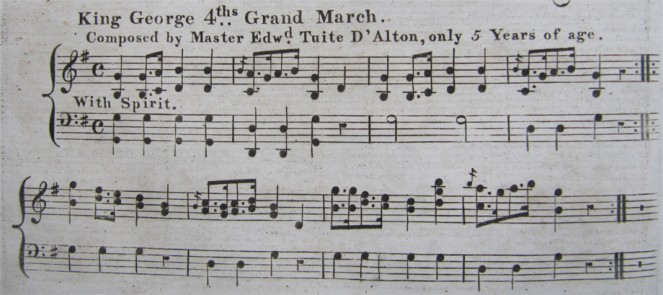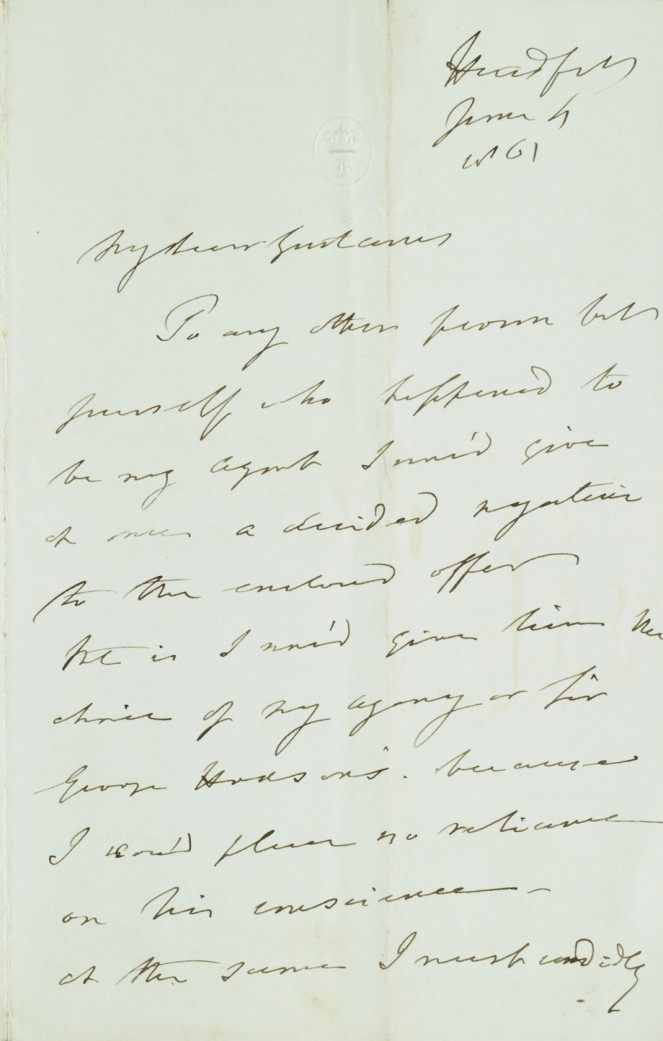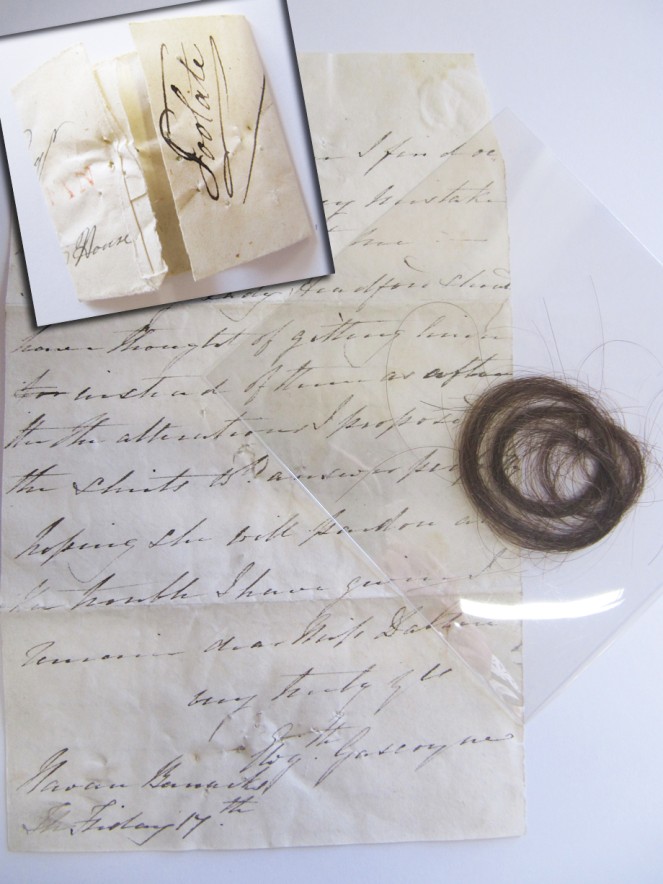by Eimear Walsh, NLI Manuscript Student
Still working away on the Headfort Estate Papers, we came across a family within a family. Incongruously in a collection about a family named Taylour, there kept cropping up material from the mid 19th century relating to members of a Tuite Dalton family. To puzzle us further, were the many references in their letters to ‘my darling papa’ and ‘my dearest siblings’ that were addressed to the Taylours.

First page of a letter from Bective, later 3rd Marquess Headfort, to his brother Edward Tuite Dalton or "My dear Eddy". NLI ref. Ms. 49,015.
Yet who were these impostors, rising above their stations and audaciously asserting a foothold amongst such lofty company? What gall! And we know their claims to be untrue because that great bible of aristocratic Who’s Who tells us so: Burke’s Peerage, Baronetage and Knightage. For if you consult this genealogical heavyweight under the title ‘2nd Marquess of Headfort’, you will see listed as his offspring: Thomas, the Earl of Bective, Lady Olivia, Lady Mary Juliana, Lord Robert, Lady Virginia and Lord John Henry. A fine noble brood. What, or should I say who, is not mentioned are three more children: Gustavus, Edward and Adelaide Tuite Dalton - our three wannabes. In fact, the only mention we have of this trio, other than their letters, is a reference in the PRONI calendar on Headfort Papers casting them as ‘apparently relation[s] of the Headfort agent’.
Yet all this is but a cruel trick of history. Contrary to being relatives of staff, these children were very much part of the Taylour family, as indicated by the many warm letters written to them that are signed ‘your affectionate father, Headfort’, ‘your dutiful brother, Bective’, et al. After some digging around, it came to light that these children were raised by the Marquess of Headfort after he married their widowed mother, Olivia Stevenson, in 1822. The children were aged 11, 7 and 3 at the time and grew up in Kells regarding this man as their father. Their biological father was Edward Tuite Dalton, a close friend of the poet Thomas Moore and well-known composer, whose musical piece on King George IV’s visit to Ireland we have here in the Library. He composed it aged 5!

King George IV's Grand March. Composed by Master Edward Tuite D'Alton, only 5 Years of age. NLI ref. JM 4639
Their maternal grandfather was Sir John Stevenson, ‘famous as the composer of sacred and sublime melody, the acclaimed facile princeps of his day.’ Despite the impressive musical lineage, their vocations lay elsewhere. Gustavus in politics and farming, Edward in soldiering and anthropology, and Adelaide in hostessing and marrying… (apparently).

Letter from Lord Headfort to his son, Gustavus Tuite Dalton re Estate Matters, 4 January 1861. NLI Ref. Ms 49,011/1
The eldest Gustavus (1811-1879) went on to become an agent on his stepfather’s estate in Virginia and our collection has much correspondence between Gustavus and his father and brother regarding estate matters. Being the editor of the Anglo-Celt newspaper, he was greatly interested in politics and we have two of his books in our collections, The English Press on the Irish Question and an Irishman’s View of it and Irish Peers on Irish Peasants: An Answer to Lord Dufferin and the Earl of Rosse.
In the letter to left, Lord Headfort writes: "My dear Gustavus, ... I wish to know what your opinion may be upon this, and as I know, and you know, I must have a deep interest in everything that concerns you and yours ... your opinion simply because I have a just estimate of your upright character and know you would not do anything you thought wrong. ... Your affectionate father" (NLI Ms. 49,011/1)
His younger brother Edward (1815-1880) joined the Indian regiment of the British army and rose to become General of the Bengal Lancers. His letters home to his father recount his exciting adventures in India. He wrote an anthropology book in 1872 entitled The Descriptive Ethnology of Bengal, regarded as ‘influential’ and ‘an invaluable account of various tribes of Northeast India’. A town in India, Daltonganj, is named after him (now Medininagar). See some of Edward's interesting letters written to Lord Headfort and his service record.
![Second page of a letter from Bective, later 3rd Marquess Headfort to his brother, Edward Tuite Dalton, very sweetly boasting of catching a perch that was almost a pounds wait [sic]. NLI ref. Ms. 49,015. Second page of a letter from Bective, later 3rd Marquess Headfort to his brother, Edward Tuite Dalton, very sweetly boasting of catching a perch that was almost a pounds wait [sic]. NLI ref. Ms. 49,015.](/sites/default/files/styles/inline_media/public/2011/09/3rd-Marquess-Bective-to-Edward-Tuite-Dalton-Back-920.jpg?itok=NICy_meU)
Second page of a letter from Bective, later 3rd Marquess Headfort to his brother, Edward Tuite Dalton, very sweetly boasting of catching a perch that was almost a pounds wait [sic]. NLI ref. Ms. 49,015.
Yet it is the youngest, Adelaide (1819-1895) who intrigues me the most. History would have us believe that in her lifetime she managed three husbands, framing her as a Black Widow/Cougar type. From what I have researched I believe she married only twice. At the tender age of 15 she married John Young, Baron Lisgar, who later became Governor General of Canada. This effectively made Adelaide, or Lady Lisgar as she was henceforth known, something of a first lady of Canada. In her roles as a diplomat’s wife, Adelaide excelled and ‘for years led society in its most brilliant phase, and made her social state resplendent by her social attributes’. After her first husband’s death, she re-married in 1878 his private secretary, Sir Francis Charles Fortescue Turville, who was twelve years her junior, and not the alleged 24 years given in some sources.

Surprisingly unromantic letter to Adelaide Tuite Dalton from a gentleman at Navan Barracks containing a lock of hair, NLI ref. Ms. 49,014/1 and another lock wrapped in paper that says Edward Lucas Esq. of Castleshane House, Co. Monaghan (the owner of said lock?)
Accounts I have found of her are quite contradictory. While one account says of her, ‘Irish by birth and lovable by nature, she charmed the whole country [of Canada]’, another writes of ‘a fearsome character [who] denied a dying servant the last rites’. Which was the true Adelaide? As always, history is deceptively subjective so I can only go by the girl I know from the letters in our collection, a sweet girl with a motherly disposition who took care of her younger siblings and was especially fond of her father, writing him in the 1830s, ‘My dearest papa, we are all delighted at the pleasure ... of seeing you ... my sisters send you the enclosed violets.’
Though official deeds, the laws of primogeniture, or genealogical guides may not acknowledge the presence of these three interesting individuals within the family of Taylour, I like to think that through our newly catalogued collection, we may welcome the Tuite Daltons back to their rightful place in history, alongside their family in the unravelling chronicle of Headfort.
